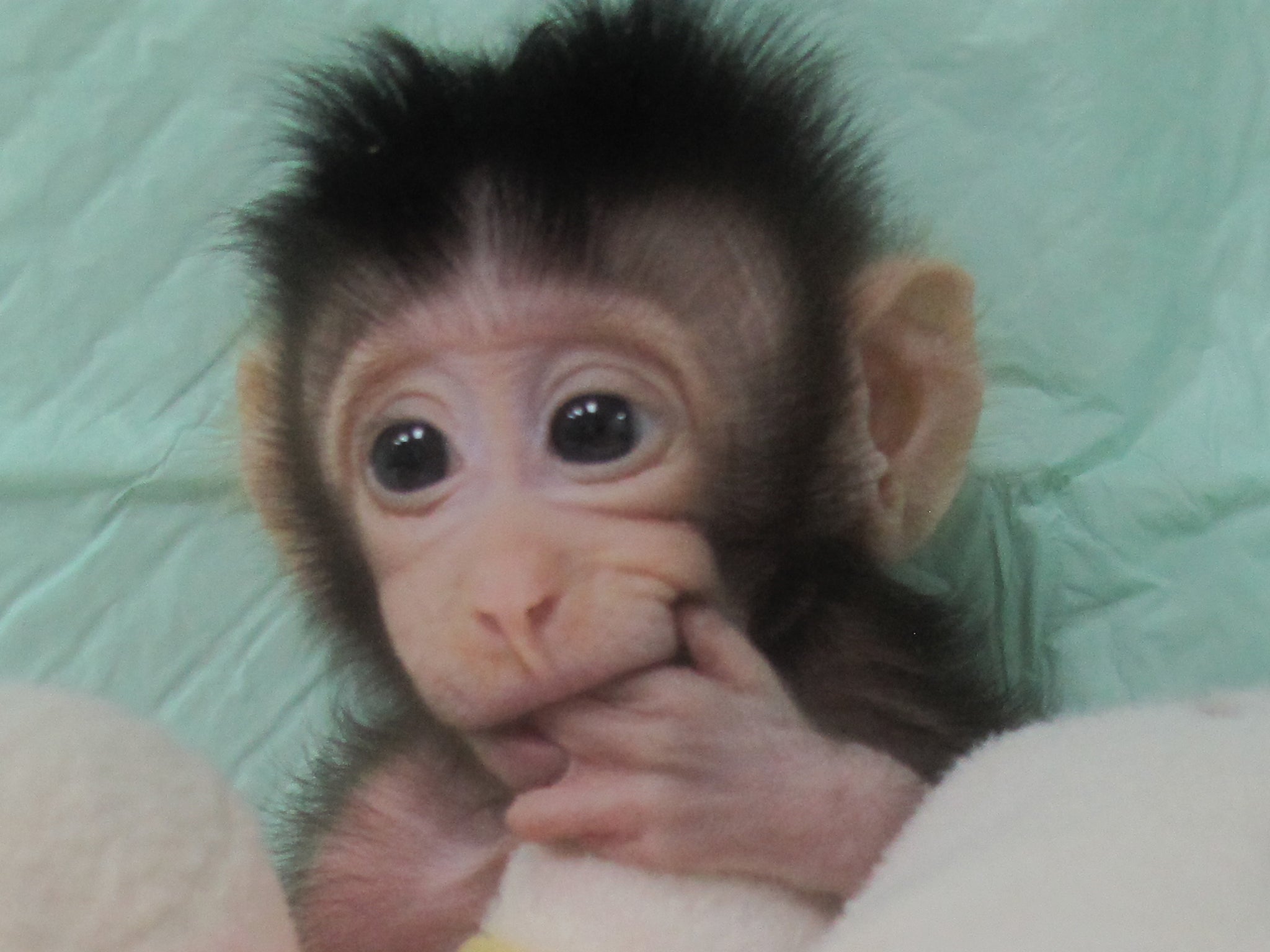Monkeys cloned in world first, scientists reveal
Whole labs full of genetically identical macaques can now be created – prompting fears about the ramifications of humans being replicated
Two monkeys are the first ever primates to be cloned using the technique that created Dolly the sheep.
The technique brings the prospect of cloned human beings even more closer. But scientists caution that there may be no good reason to create such clones, and that ethical and legal questions need to be answered about such research.
More immediately, the technique will allow researchers to create whole labs full of genetically identical monkeys. That could prove tremendously useful in scientific and medical research – allowing doctors to watch how specific treatments affect the genetic makeup of animals that are otherwise exactly the same, for instance.
The two identical long-tailed macaques – named Zhong Zhong and Hua Hua – were born eight and six weeks ago at a laboratory in China. They represent the furthest reaches of cloning technology, genetically resembling each other entirely.
They aren’t, strictly, the first primates to have been cloned. But they are the first to be produced using the single cell nuclear transfer (SCNT) technique, which involves transferring cell nucleus DNA to a donated egg cell that is then prompted to develop into an embryo, and is the same process used for Dolly the sheep. Previous work has relied on splitting embryos, which is the same phenomenon that happens when twins are born and can only produce four offspring.
The two monkeys were part of a total of 79 different transfer attempts, which used different techniques. Scientists had some luck cloning monkeys using adult cells, but those were only able to survive for a few days.
That genetic symmetry of the monkeys means that scientists could create a whole experiment’s worth of identical monkeys, save for the specific genetic changes that they want to study.
“You can produce cloned monkeys with the same genetic background except the gene you manipulated,” said Dr Qiang Sun, the Chinese scientist who led the team that produced the research published in the journal Cell.
“This will generate real models not just for genetically based brain diseases, but also cancer, immune or metabolic disorders, and allow us to test the efficacy of the drugs for these conditions before clinical use.”
But the research has already led to fears about where it could lead. The scientists stress they did the work under strict international codes, and co-author Muming Poo said the team was aware “that future research using non-human primates anywhere in the world depends on scientists following very strict ethical standards”.
The breakthrough means that it would theoretically be easier to clone a human, since primates share so much of their makeup with us. But actually doing so is much less likely, given the ethical and regulatory objections there would be to any such plan.
“While they succeeded in obtaining cloned macaques, the numbers are too low to make many conclusions, except that it remains a very inefficient and hazardous procedure,” said Robin Lovell-Badge from the stem cell biology and developmental genetics laboratory at the Francis Crick Institute.
“Because they are non-human primates, macaques are obviously evolutionary much closer to humans than other animals typically used in research, and the aim of the work was to use the cloning methods to allow production of genetically identical macaques to use in biomedical research, where confounding factors of genetic variability could otherwise complicate experiments.

“However, with only two produced it would have been far simpler to just split a normal early embryo into two, to obtain identical twins. The work in this paper is not a stepping stone to establishing methods for obtaining live born human clones. This clearly remains a very foolish thing to attempt, it would be far too inefficient, far too unsafe, and it is also pointless. Clones may be genetically identical, but we are far from only being a product of our genes.”
Any cloned human would require a great deal of work and probably produce someone very different from the person being cloned – the effects of people’s upbringing and environment is just too strong to mean that it would be a matter of creating another version of a person.
“We do need to think about not only is it not acceptable, but it is a bit pointless anyway,” said Darren Griffin, professor of genetics at the University of Kent. ”What are people trying to achieve if they attempted to do that?
“Because realistically a clone would only be somewhat similar to the individual they came from. They would be less similar than an identical twin: they would have a different upbringing, born from a different womb, and brought up in a different era.”
Scientists will keep watch on Zhong Zhong and Hua Hua, who for now appear to be growing and developing like normal monkeys. They expect more clones to be born in the coming months.
Join our commenting forum
Join thought-provoking conversations, follow other Independent readers and see their replies
Comments
Bookmark popover
Removed from bookmarks